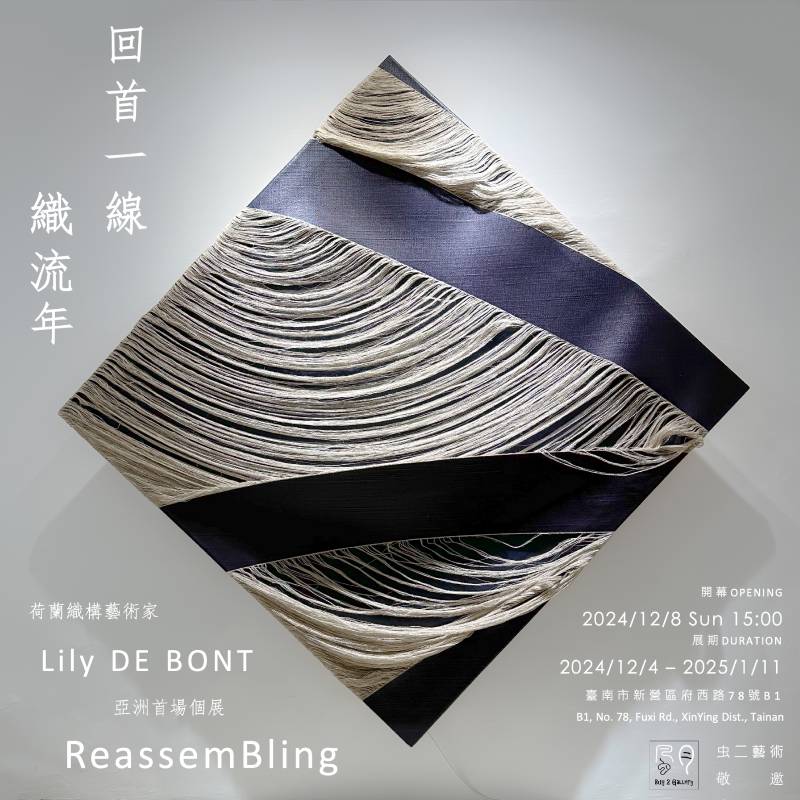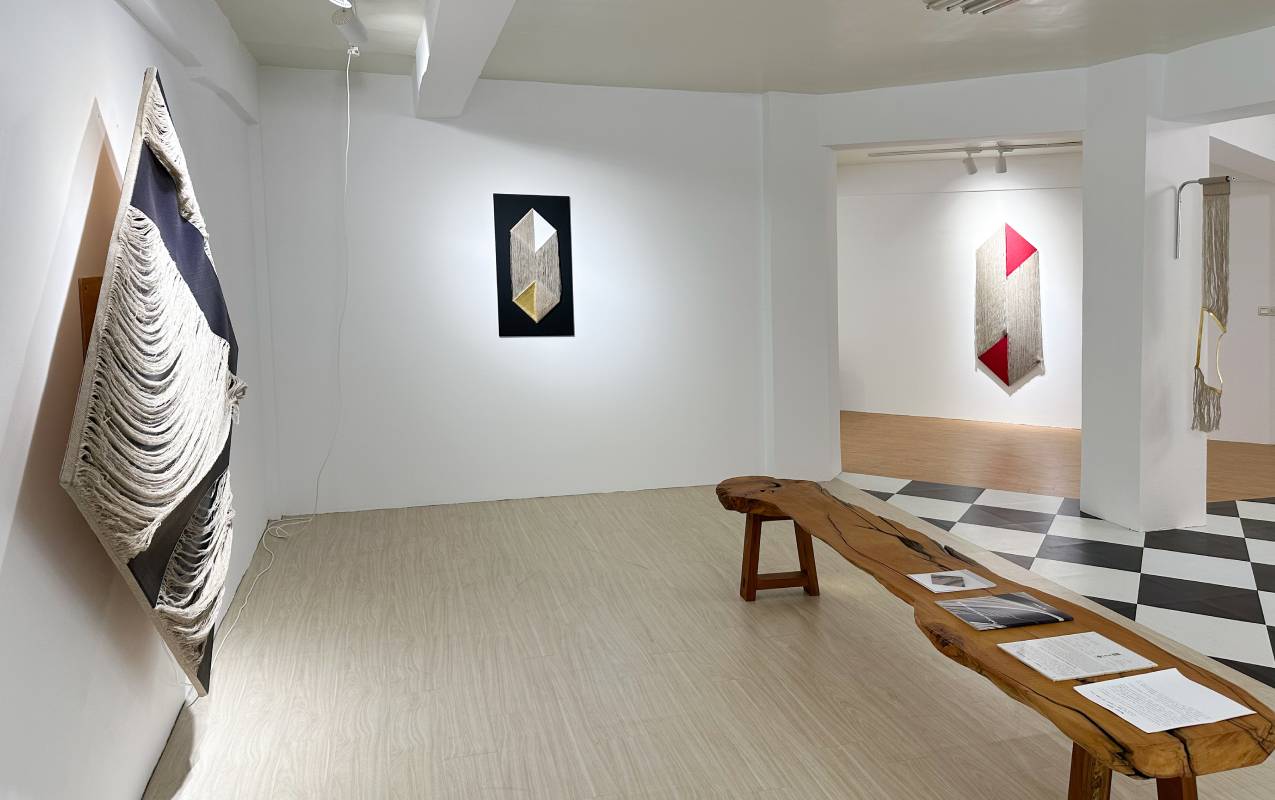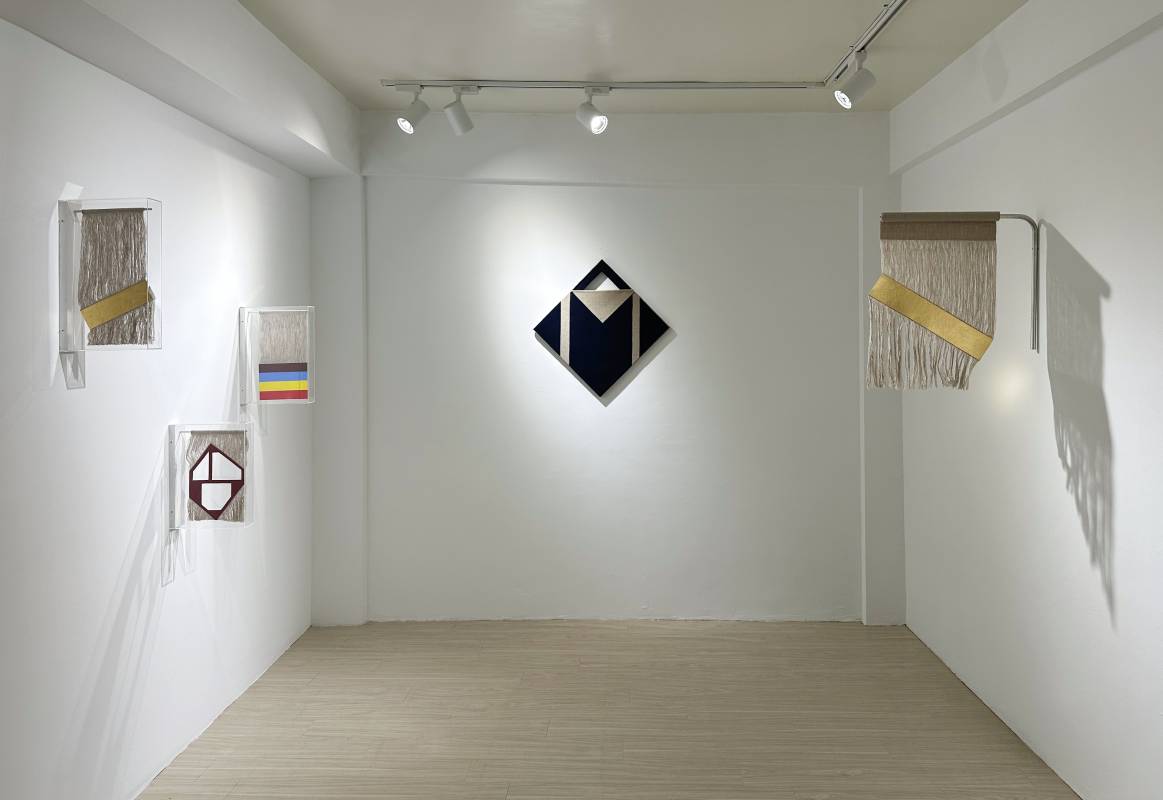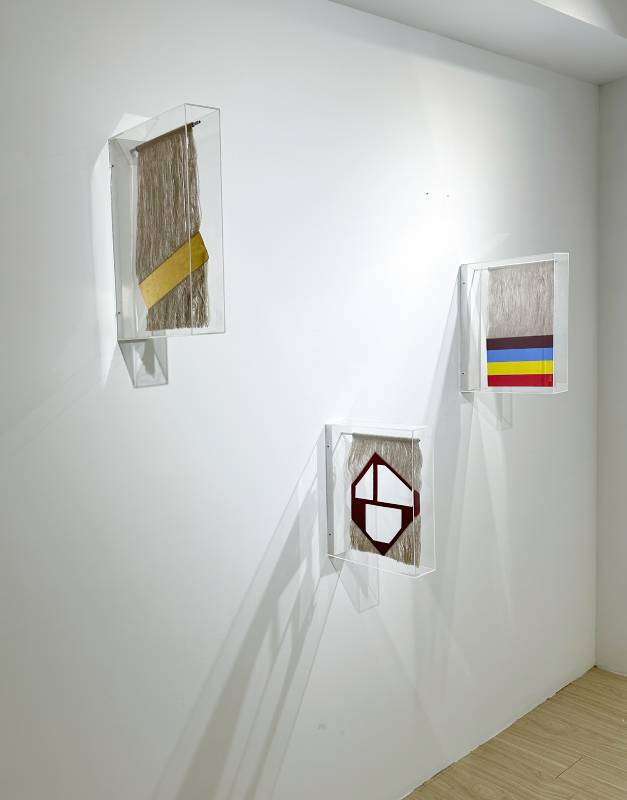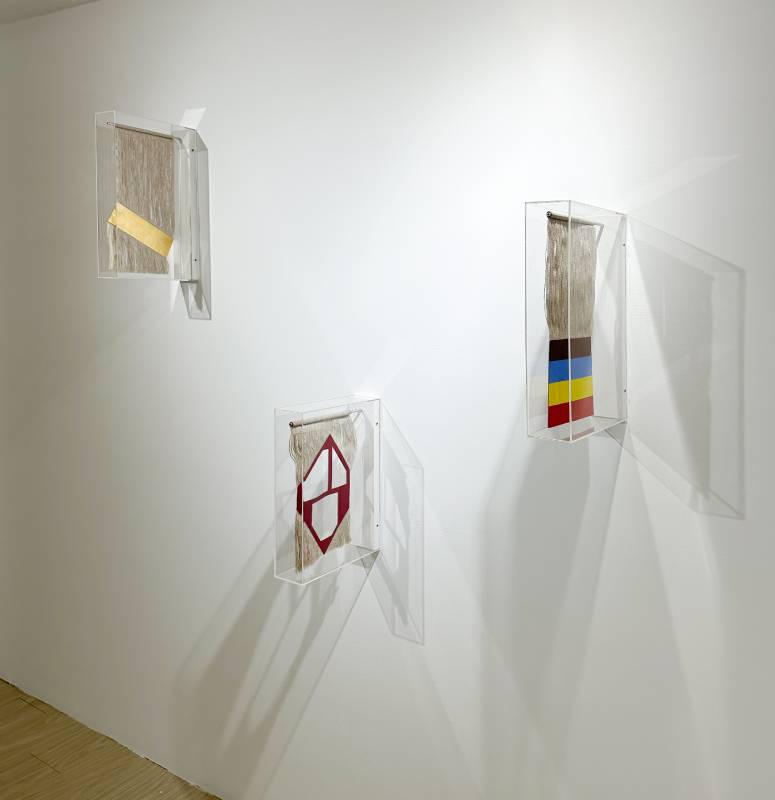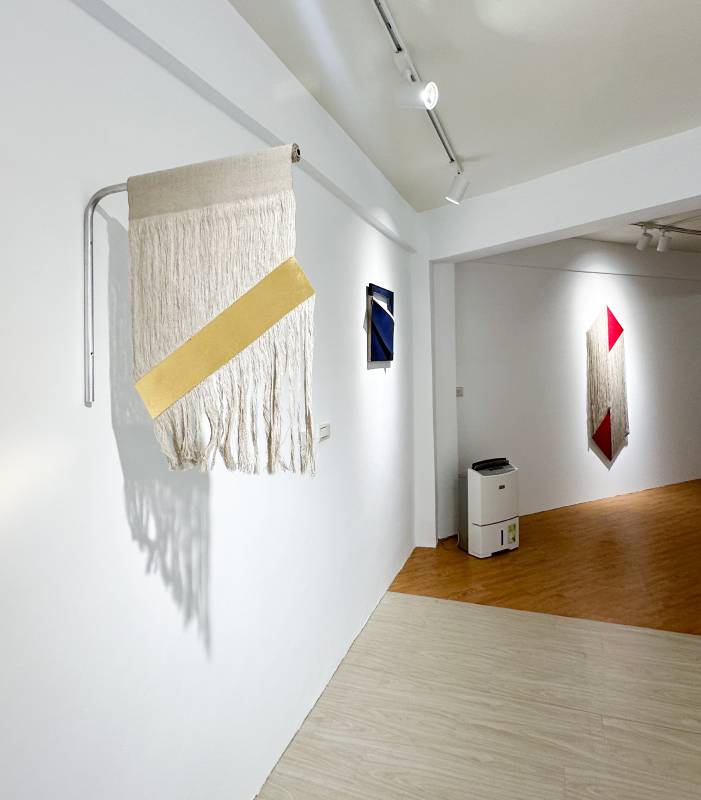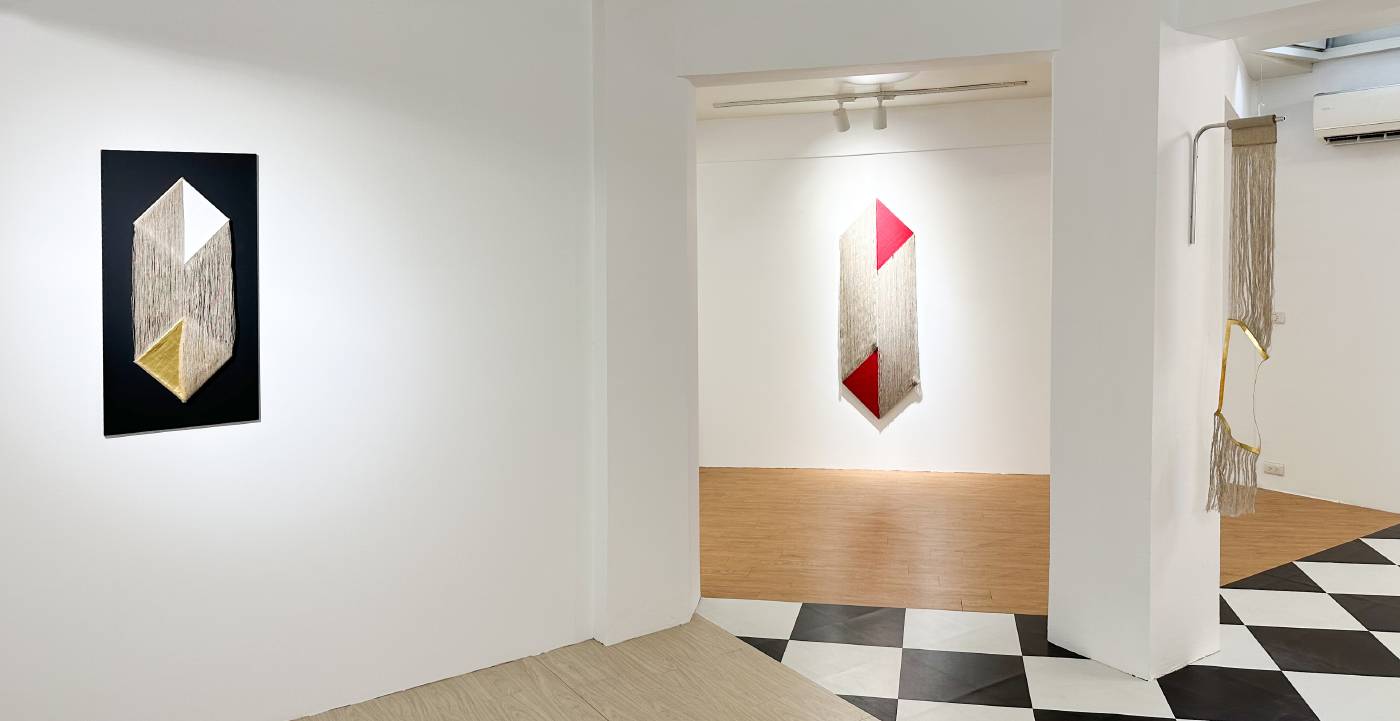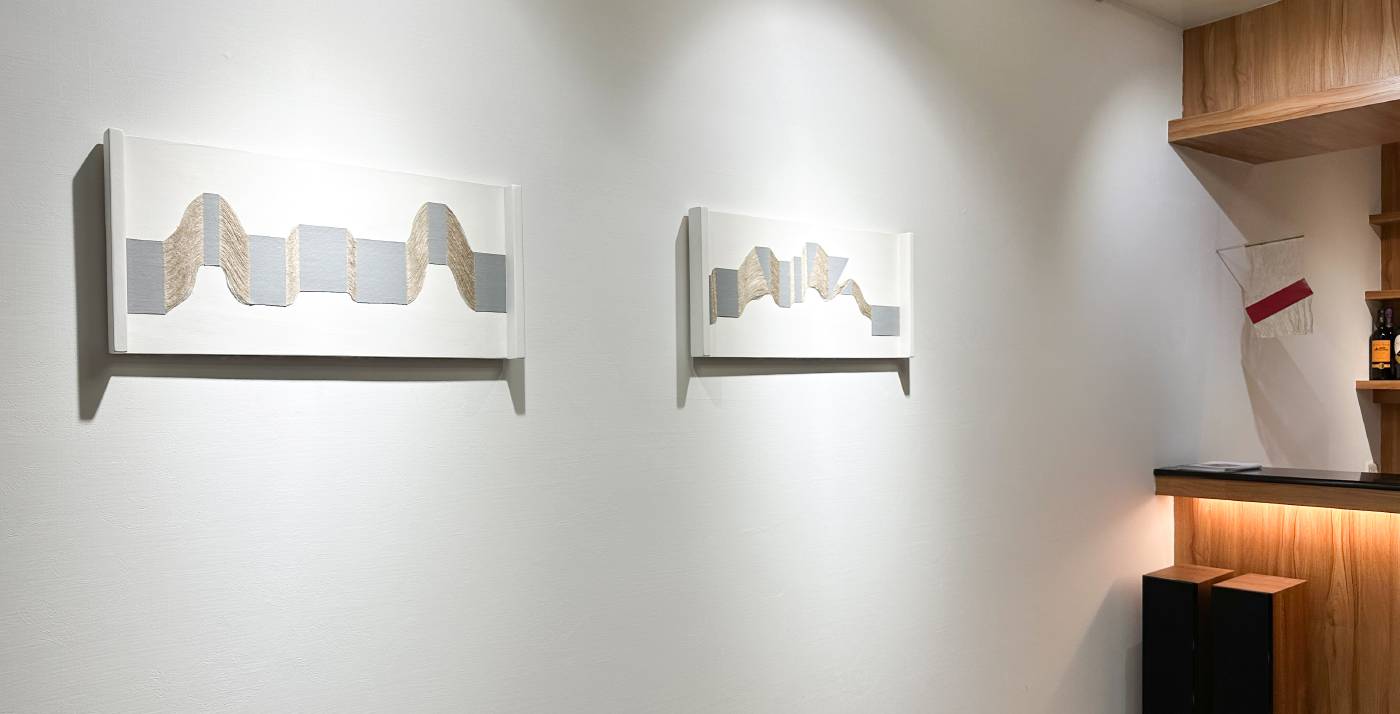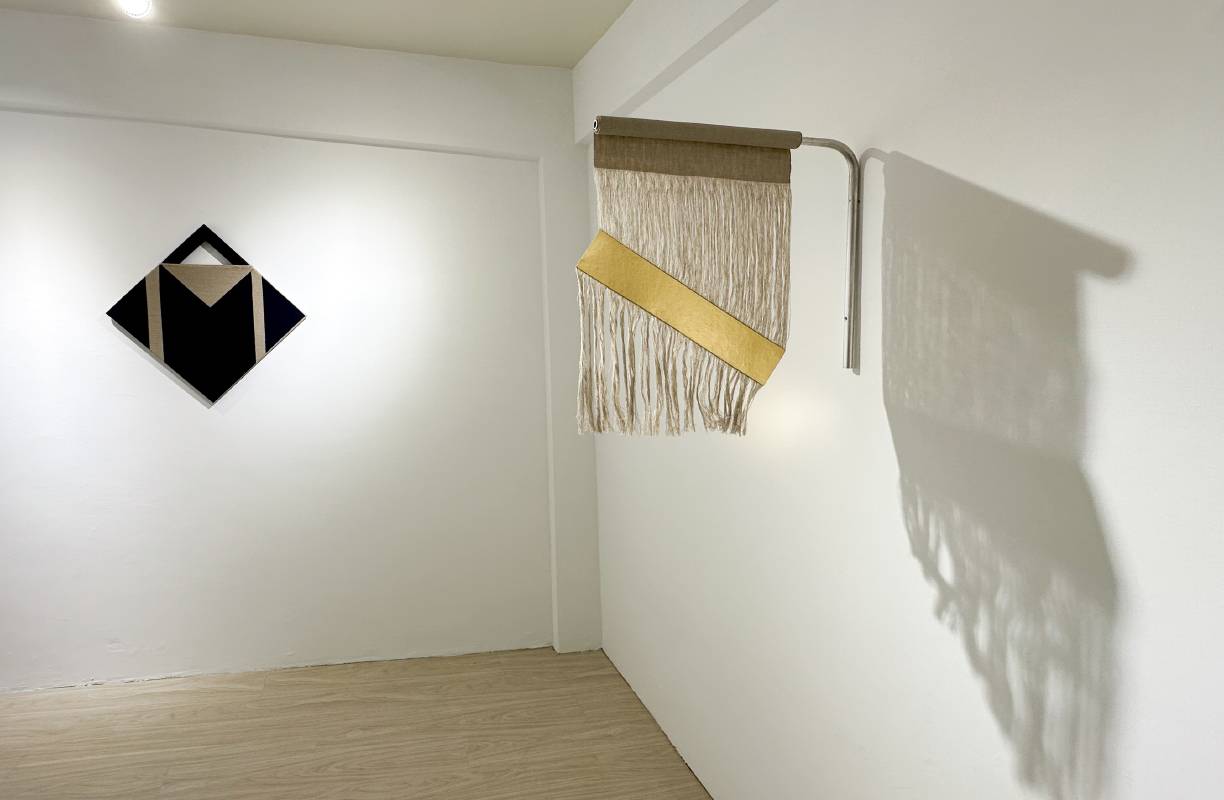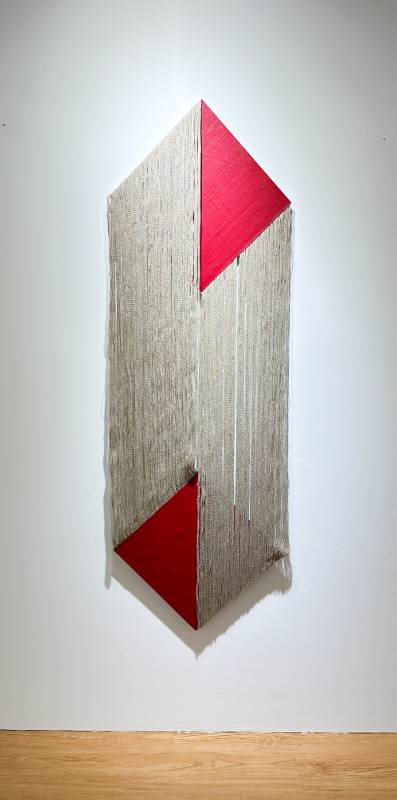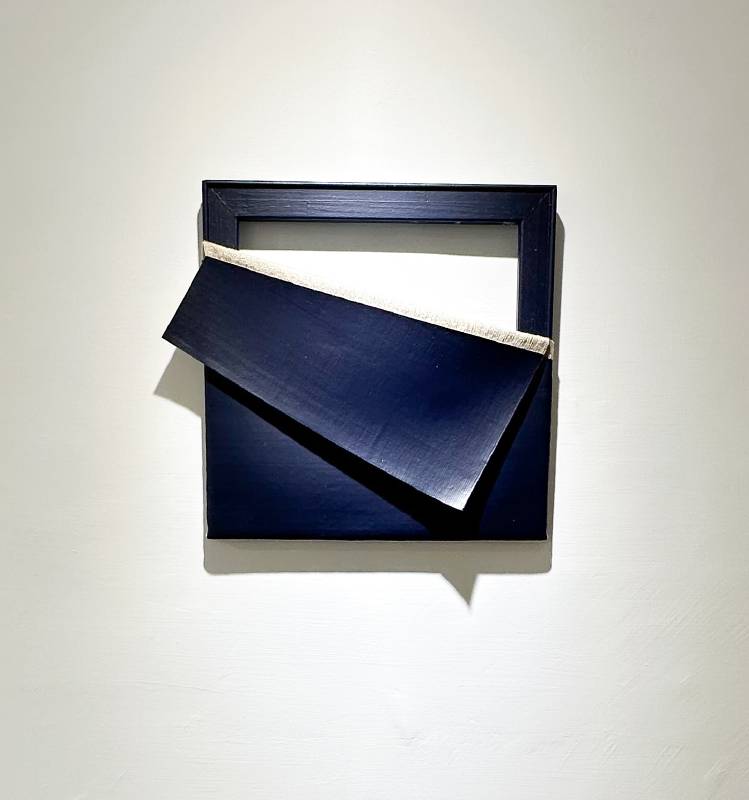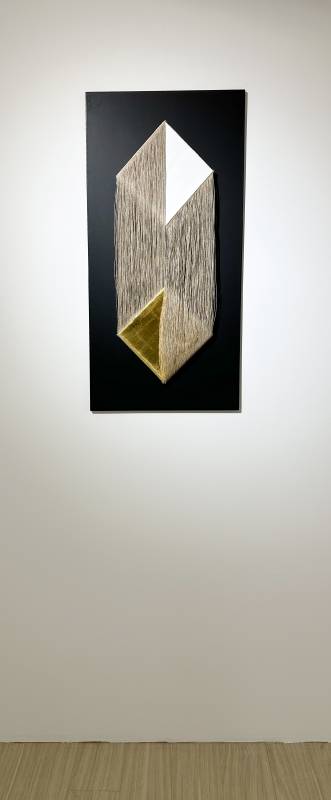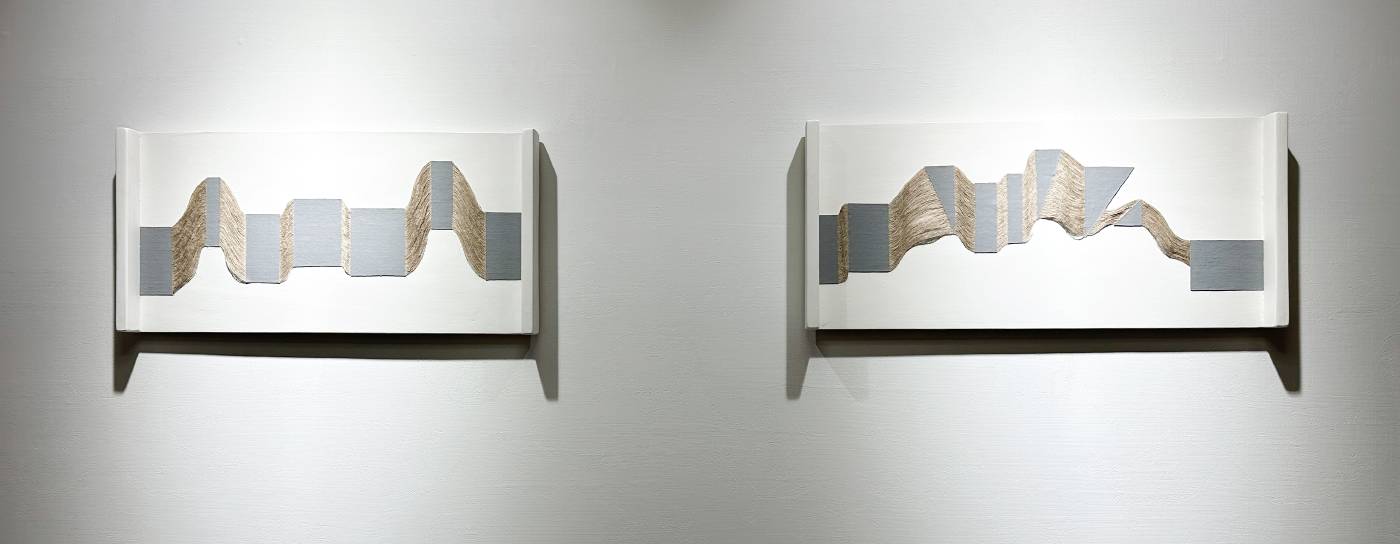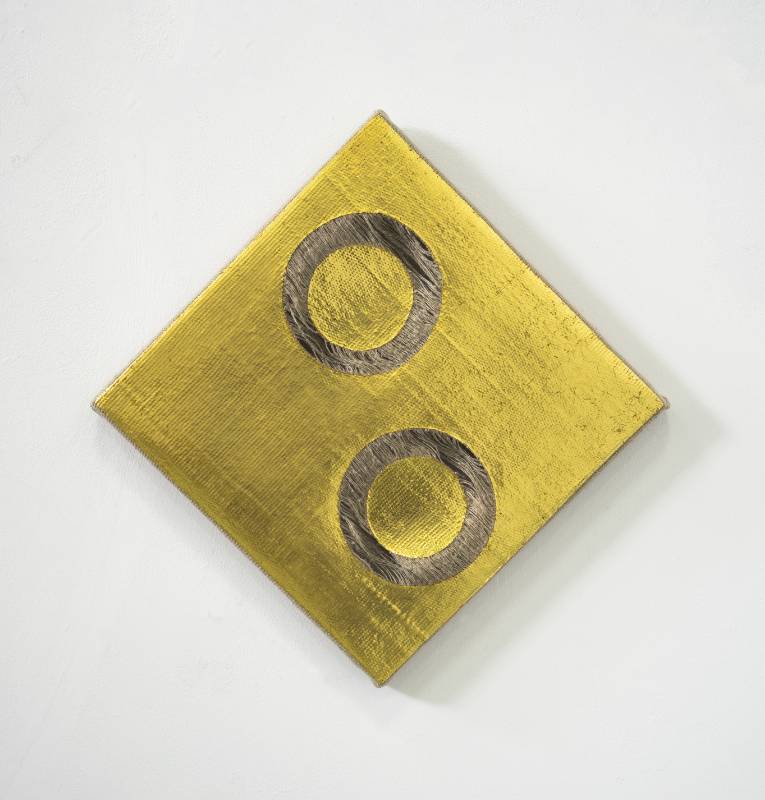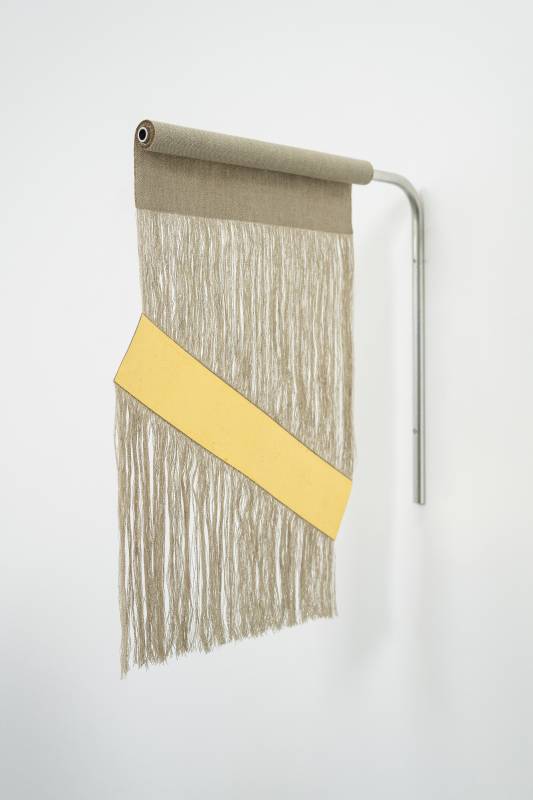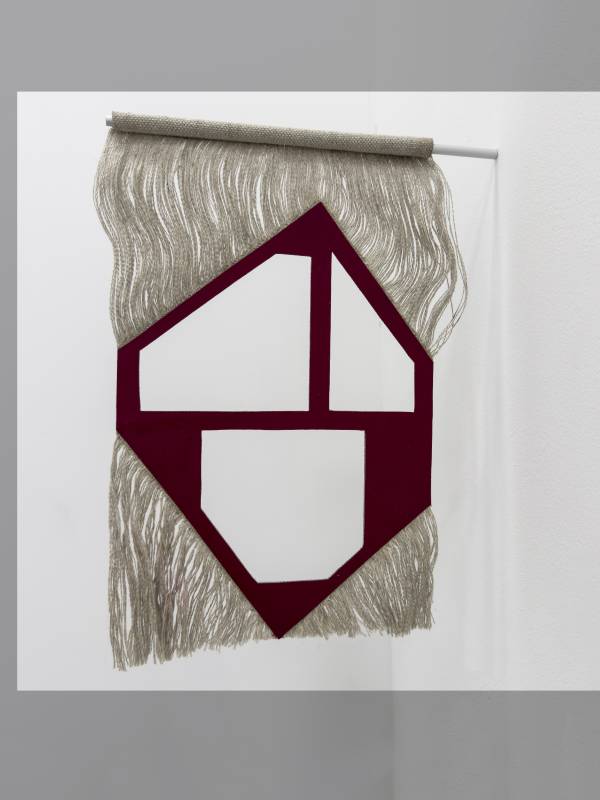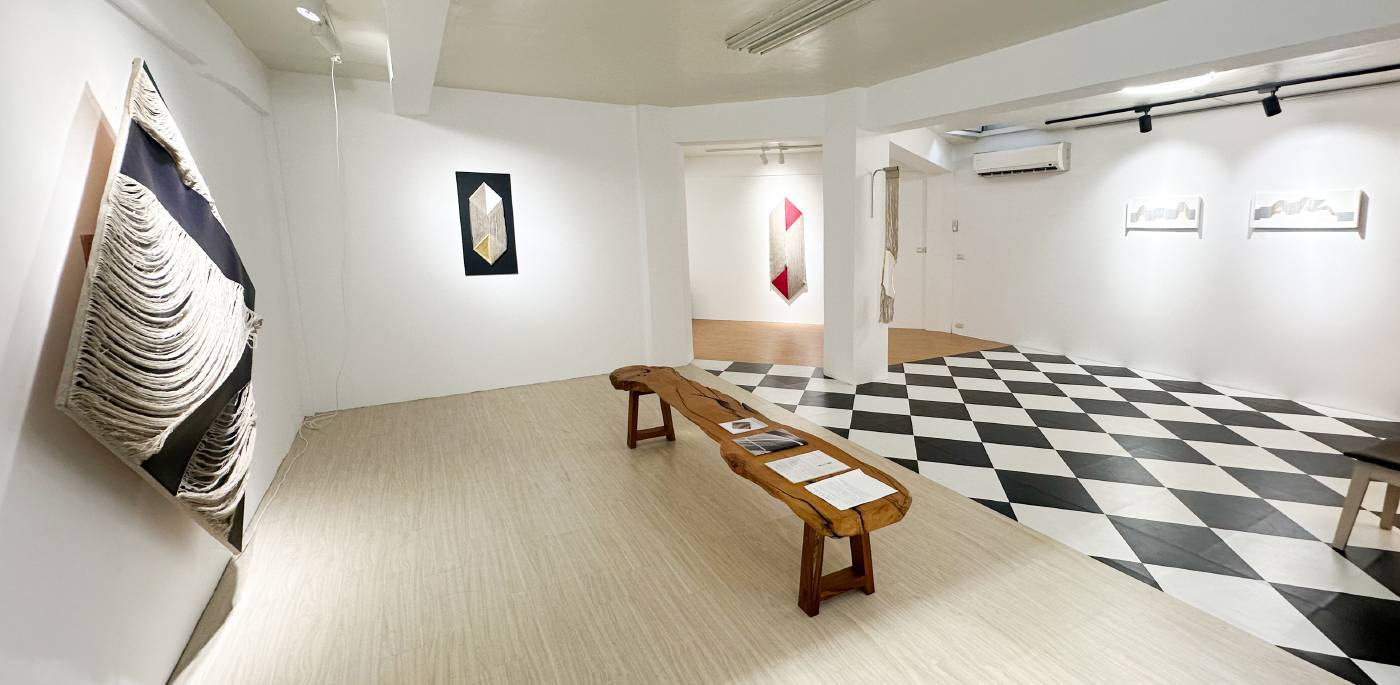虫二藝術
【回首一線織流年】荷蘭織構藝術家 Lily DE BONT 個展
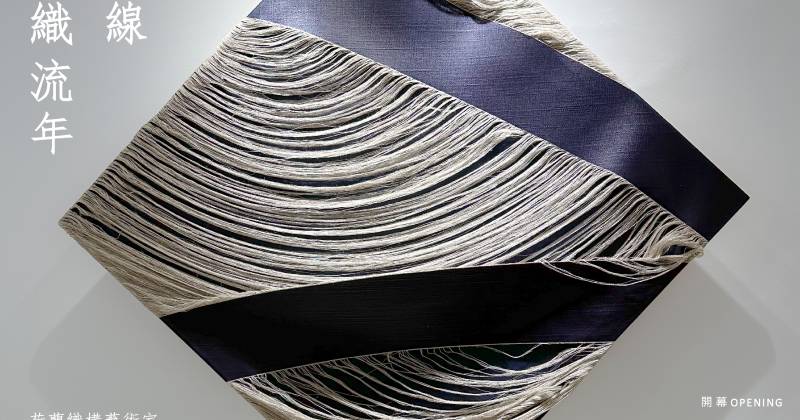
-
展期
日期:2024-12-04 ~ 2025-01-11
-
地點
臺南市新營區府西路78號B1
-
相關連結
回首一線織流年|Lily DE BONT個展
ReassemBling|Solo exhibition of Lily DE BONT -
參展藝術家
Lily DE BONT、莉莉・德邦特
-
▍展覽背景與藝術家介紹
《回首一線織流年》是荷蘭藝術家莉莉・德邦特(Lily de Bont,1958年生)首次在台灣的個展,展現她長期以來挑戰傳統繪畫邊界的創作。她以激進的繪畫技法著稱,通過將未上色的畫布裁剪成鬆散的線條,並以此建構出可變形的結構,融合了「繪畫」與「反向編織」的語彙。這種創作手法模糊了繪畫與雕塑的界限,也邀請觀眾重新審視畫布這一繪畫載體本身的物質性與潛力。
莉莉・德邦特的藝術理念植根於對繪畫本質的深刻反思。她將繪畫看作一個動態的過程,而非靜態的物件。她表示:「繪畫彷彿被極簡化了,然而你會發現,這並未讓作品看起來簡單,反而呈現出一種動態、複雜的構圖,其中重力也扮演了重要角色。」這些鬆散的線條在重力的影響下,成為繪畫的「行動者」,參與畫作的構建過程,賦予作品一種隱秘的生命力。
▍藝術史脈絡與技法的演進
莉莉・德邦特的創作可以視為對20世紀現代主義以來「繪畫本質」討論的延續與拓展。與盧西奧‧封塔納(Lucio Fontana)在1949年開創的「空間概念」類似,她同樣將畫布視為不僅僅是承載顏料的平面,而是可以被割裂、改造與重新定義的物件。封塔納的畫布切割行為表達了一種對繪畫與空間的革新思考,而德邦特則更進一步,將切割的過程延展為一種結構性的再編織行為。
此外,她的創作也讓人聯想到伊娃・海瑟(Eva Hesse)的雕塑,尤其是海瑟在 20 世紀 60 年代的作品中以繩索、網狀結構等柔性材料創造的「反形式」結構。Hesse的作品反對僵化的形式主義,轉而注重材料的觸感與時間性。同樣地,德邦特的「反向編織」技法賦予作品一種柔性質地,並讓其具有隨環境與重力改變的能力。這種動態性使得作品超越靜態物件的限制,成為一種時間的軌跡。
▍柏林經驗與動態時間的融入
柏林作為德邦特創作的重要轉折點,對她的作品產生了深遠影響。在這段旅居期間,德邦特開始以「柏林藍」為主要色調,並通過鬆散線條的排列隱喻柏林的城市紋理:圍牆的界限、街道的紋理、以及這座城市的歷史記憶。她的畫布結構隱隱呈現柏林圍牆的隱喻性影響,將過去的傷痛轉化為具抽象表達的圖像語彙。
這段經驗也啟發她進一步探討動態與時間的關係。近年的作品中,她透過逆時針旋轉畫作的方式,讓線條隨之「舞動」。這種旋轉並非純粹的形式操作,而是一種試圖追溯時間的隱喻——彷彿藉由線條的「反向編織」,解構並重組過去的記憶與經驗。
▍當代藝術的比較與延伸
莉莉・德邦特的作品可以放置於當代藝術中更廣泛的解構與重組傳統語言的潮流中進行討論。她的技法讓人聯想到美國藝術家希拉・希克斯(Sheila Hicks)的織物藝術。Hicks以織物為媒材,創造出具雕塑感的藝術作品,並挑戰織物作為工藝的既有定義。同樣地,德邦特也將「編織」這一傳統工藝語彙轉化為藝術表達的手段,但她的反向編織更多地關注於繪畫的根本特性,並與現代主義繪畫的反思脈絡緊密相關。
此外,德邦特的創作與當代日本藝術家杉本博司(Hiroshi Sugimoto)的時間性探索存在共鳴。杉本以攝影呈現時間的靜止與延續,而德邦特則以線條的動態重構時間的軌跡。兩者雖媒材不同,但皆以作品的形式激發觀眾對時間本質的深刻思考。
▍結語:回首與織流年的啟示
《回首一線織流年》不僅展示莉莉・德邦特的創作成就,也在更大的藝術史語境中回應了對「繪畫是什麼」的永恆提問。她以繪畫的基本構成——畫布與線條——為基點,重新定義繪畫的語彙,並賦予其更多維度的可能性。
這些隨重力而舞動的線條,這些充滿動態的結構,這些被時間反覆編織的記憶與情感,皆以其優雅的形式喚醒我們對時間、歷史與存在的深刻關照。德邦特的作品提醒我們,藝術不僅是記錄當下,更是對過去的追溯,與對未來的召喚。
▍Exhibition Background and Artist Introduction
ReassemBling marks the Taiwanese debut of Dutch artist Lily de Bont (b. 1958), renowned for her radical approach to painting. De Bont’s practice involves cutting unpainted canvases into loose strands, creating flexible, transformable structures that merge painting with a process she calls “reverse weaving.” This technique challenges the boundaries of traditional painting, presenting a deconstruction and reassembly of the medium. De Bont remarks, “Painting seems to be reduced to its essentials, yet this does not make the works appear simple. Instead, they display dynamic and complex compositions, with gravity playing a pivotal role.”
In recent years, De Bont has further introduced “movement” into her works. Her paintings rotate counterclockwise, allowing the loosened threads to sway, as if retracing time through reverse weaving. A residency in Berlin profoundly influenced her practice, adding somber tones dominated by what she calls “Berlin Blue.” Her compositions subtly echo the city’s geographical isolation, architectural forms, the history of the Berlin Wall, the textures of its streets, and its layered past.
▍Historical Context and Technical Evolution
Lily de Bont’s work continues and expands upon the modernist inquiry into the essence of painting initiated in the 20th century. Her approach resonates with Lucio Fontana’s Concetto Spaziale (Spatial Concept) series, beginning in 1949, where the canvas was not merely a surface for paint but a material to be pierced, cut, and redefined. While Fontana’s slashes reimagined the relationship between painting and space, De Bont advances this conversation by reconstructing her canvases into structural, woven forms.
Her technique also recalls Eva Hesse’s sculptural works from the 1960s, particularly her use of rope, nets, and flexible materials to create “anti-form” structures. Like Hesse, who emphasized material tactility and temporal qualities, De Bont’s reverse weaving introduces a pliable texture and adaptability, allowing her works to transform with their environment and the force of gravity. This dynamic quality liberates her pieces from static objecthood, rendering them traces of time’s passage.
▍Berlin’s Influence and the Integration of Time
Berlin, a pivotal turning point in De Bont’s artistic journey, deeply informs her current works. During her residency, she adopted “Berlin Blue” as a central motif, arranging loose threads in patterns that metaphorically mirror Berlin’s urban landscape: the lines of the Wall, the textures of the city’s streets, and the echoes of its history. Her canvases evoke the psychological and geographical impact of the Wall, transforming its narrative into an abstract visual language.
This period also inspired her exploration of movement and time. In recent works, the counterclockwise rotation of her canvases allows threads to “dance,” a symbolic act of reversing time. This motion is more than a formal gesture—it is a poetic attempt to unravel and reconstruct memories and histories through the medium’s inherent qualities.
▍Connections with Contemporary Art
De Bont’s practice aligns with broader currents in contemporary art that deconstruct and reconfigure traditional media. Her technique draws parallels to the fiber art of Sheila Hicks, who uses woven materials to create sculptural forms that challenge the conventional definitions of craft. Similarly, De Bont employs weaving, but her reverse process interrogates the foundational elements of painting and situates her within the modernist lineage of material and formal inquiry.
Her works also resonate with Hiroshi Sugimoto’s explorations of time, albeit in a different medium. While Sugimoto captures the stillness and continuity of time through photography, De Bont reconstructs its flow through the dynamic interplay of lines and movement. Both artists provoke profound reflections on the nature of time, memory, and their representation in art.
▍Conclusion: Weaving Reflections of Time
Tracing the Threads of Time showcases not only Lily de Bont’s artistic achievements but also her response to the timeless question, What is painting? Starting from the fundamental elements of canvas and line, she redefines the vocabulary of painting, imbuing it with multidimensional possibilities.
These gravity-driven strands, dynamic structures, and interwoven traces of memory and emotion elegantly prompt us to reflect on time, history, and existence. De Bont’s works remind us that art is not merely a record of the present but a dialogue with the past and an invocation of the future. Through her practice, she offers a profound meditation on the elasticity of time and the enduring power of creativity. -
REFERENCE
回首一線織流年|Lily DE BONT個展
ReassemBling|Solo exhibition of Lily DE BONT
